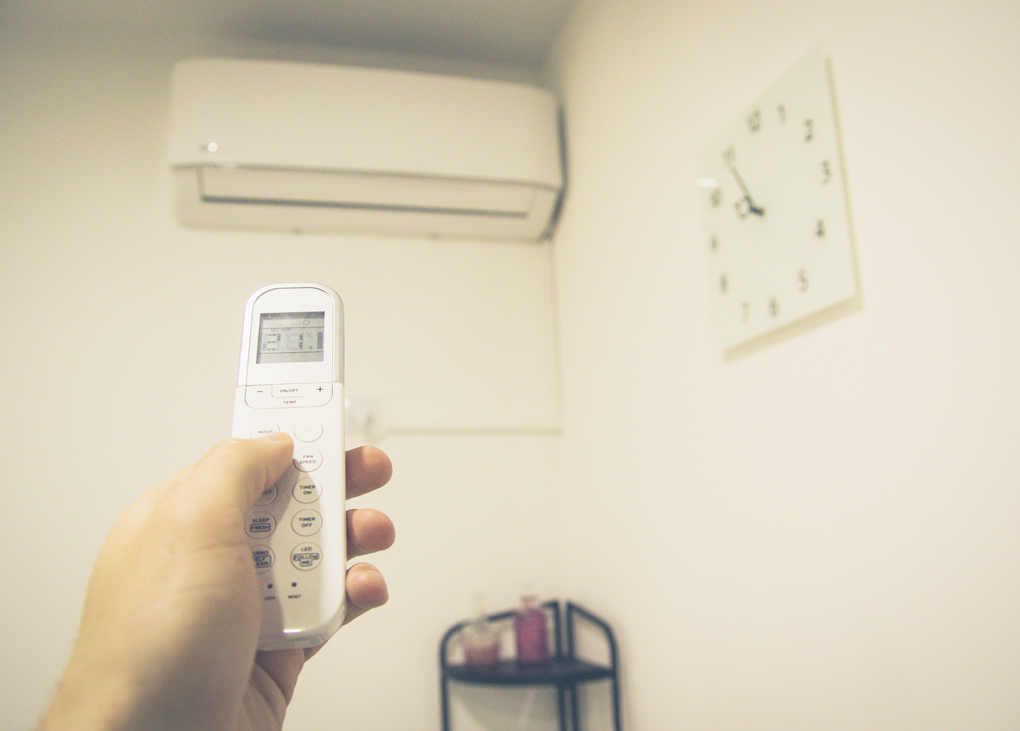Demand response programs for residential air conditioning have raised concerns about invasions of privacy and interference from the all-seeing eye of government. But as Louise Belfield discovers, this power saving measure is less scary than it seems.
Reporting on demand response for air conditioner use is often sensationalised, drilling home the claim that “the government can turn of your air conditioner.” While this might technically be true, it’s not the whole story.
Demand response is currently a voluntary or incentivised shift in electricity consumption by consumers, including households, businesses, and government agencies. It’s designed to help reduce peak demand, improve grid reliability, and lower electricity costs. The key word is “voluntary” – nobody is forced to sign up to these programs, although that might change in the future.
What’s not voluntary in some places is the technology itself. In South Australia, manufacturers must now build demand response enabling devices (DREDs) into all new air conditioners. DREDs allow electricity providers to remotely control how much power appliances such as air conditioners can use during peak demand periods.
So why are we doing this, and how is it affecting the HVAC&R industry?
The energy market
Craig Memery is Senior Advisor for Energy at Sydney’s Justice and Equity Centre and a champion of demand response programs. He is an energy policy expert and consumer advocate who focuses on ensuring people are not disadvantaged by voluntary participation.
“The demand response rule aims to save hundreds of millions annually by avoiding high wholesale energy spot prices,” Memery says.
“There have been many attempts to get this mechanism up and running, but there have been some challenges with implementing it because of a combination of invested interests.”
Electricity generators protecting their profit margins tend to see demand response as competition, and many consumers don’t understand changes like this at first, he says.
Despite this, he says demand response is a great opportunity to improve efficiency and fair access to energy.
“By using energy voluntarily, we can produce it more flexibly, help alleviate thermal constraints and constraints on distribution and transmission networks, and it can be used by customers themselves to shift demand from up-peak to off-peak.”
It can also help to integrate variable renewable energy sources such as solar and wind into the grid by providing flexibility in demand.
“Demand response is actually a reform of the national energy market,” Memery says. It has the potential to bring down the wholesale prices that all the states and territories currently pay, he adds.
It is entirely voluntary for consumers; mandatory involvement is only for manufacturers.
“For instance, all air conditioning units sold in South Australia now need to have the demand response capability and comply with the standards. And there’s a potential for this to come into effect in other states in the future.”

Keeping people safe
While Memery acknowledges that automated demand response could take people by surprise, he cites a successful program on Queensland’s Magnetic Island where all participation was voluntary.
Air conditioners were modified “by something like just one degree” to acclimatise people to the change, then that change increased incrementally. This was a user-friendly way to identify anyone who had health concerns about having the temperature varied in their energy-inefficient home, he says.
“In Australia, we’ve got really strong consumer protections for retail energy customers, so that prevents people getting nasty surprises.”
Queensland’s PeakSMART group program, offered by Energex (southeast Queensland) and Ergon Energy (regional Queensland), provides incentives – including cashback up to $400 – for installing or converting air conditioners to PeakSmart-compatible models. This helps manage peak electricity demand and allows people to save on air conditioning.
That works well, but it’s important that people aren’t harmed. For example, PeakSmart has to ensure people with thermoregulatory illnesses don’t accidentally sign up for something that endangers them during a heatwave.
We still need to ensure that consumer protections are in place so people aren’t disadvantaged or harmed by any voluntary demand response program.
“We already have protections in other areas throughout the energy system; for example the life support register, which allows certain people to maintain their power if it’s about to be cut off,” Memery says.
“My job is to help people understand their systems, such as how the simplest thermostat can work. You can set a thermostat to 22°C, but at certain times of day, different buildings can be two or three degrees above or below that position depending on the orientation of the building and the thermal qualities of the home.”
There is a real opportunity to make demand response work for the HVAC&R industry through standardisation and interfaces that allow for flexibility in how the demand response is enacted at a physical level, Memery says.
With the world facing climate change and a host of other issues, “we need the smart stuff to help protect against those temperature extremes”.

Mandatory for manufacturers
Mandatory DREDs for air conditioning “absolutely need to be part of the energy mix”, says Dr Greg Picker, Executive Director at the Air Conditioning and Refrigeration Equipment Manufacturers Association (AREMA). “But genuine consultation is needed to achieve real recognition of what the equipment can and can’t do.
“Mandatory Australian Standards are a great place to start, but you have to actually engage with the industry sector to understand the nuances.”
For instance, “from 2010 through to around 2012, the expectation was that demand for electricity across Australia, particularly on hot afternoons, was going to skyrocket and be unsustainable”.
“As part of that, we had the development of voluntary Australian Standards that looked at capacity and equipment. This was before WiFi, so all the standards were wired standards.”
The 2012 standard had three levels of response, all of which were voluntary, he says. At the time, almost everybody who manufactured equipment implemented the standard, but nobody took it up, other than in the small Magnetic Island project, Picker says.
But when the South Australian power grid collapsed for four or five days in 2019, something had to be done.
“They tried to implement regulations that called on the 2012 standard, but they started with a 2014 standard that was also voluntary, that no one could meet,” Picker says.
This standard talked about percentages, “not in terms of an absolute but as a reduction from what the equipment was already driving. So a 50% reduction wasn’t 50% output. If you were already at 70% it was a 35% outcome, or if 40% it was a 20% outcome”.
“But inverter technology doesn’t work like that; it’s not infinitely scalable. So the proposal that South Australia came up with was technically not possible, which is the reason why, when everybody started looking at the voluntary standard, nobody went ahead with it.
“Eventually, the South Australians agreed that they would have a longer period using the 2012 standard, but from July 1, 2025, would revert to their preferred approach of a 2014 standard, or any subsequent revised standard.”
The new standard (AS4755.3.1:2025) is not yet available, but will be published soon. It is essentially a revamped, more precise version of its 2012 counterpart, Picker says, “because nobody can meet the 2014 standard”.

Appreciating the complexity of the systems is just one of the issues. “Regulators don’t understand that the computing power in air conditioners is extraordinarily limited. It’s on, its off, there’s temperature, and there’s a variety of performance outputs that it can reach, and that’s it.
“Nobody puts extra smarts in there because there’s nothing for it to do, and asking it to do more becomes really problematic.”
Global standards
One of the biggest issues with the development of an Australian Standard is that equipment is built to global standards, Picker says.
“Nobody’s going to build for Australia and sure as hell no one is going to design a production line for an Australian Standard for an Australian state. We are far better off aligning ourselves with international standards and working through that. This is a global industry, with globally manufactured products.”
Complicating this are moves to significantly enhance cybersecurity around the electricity grid, he adds.
“Air conditioning got thrown into it at the last minute, but we don’t actually have the capacity to do everything that governments and regulators want us to do.
“An air conditioner that’s WiFi-enabled goes to that company’s proprietary server, typically located overseas. If implemented, the proposed requirements will have to go to an Australian server with special and higher-level intelligence. And air conditioning equipment just doesn’t support that.”
Companies don’t have the money or the capacity for the investment, he says, “and we don’t think it’s needed, because it’s not like something could somehow take control of all the air conditioners in the country, because they’re all on different systems. So there’s a failure to recognise the realities on the ground”.
Slow progress
While Picker thinks demand response is a worthwhile policy initiative with strong interest, even in South Australia “nobody’s taking it up”.
He believes there are more efficient ways of saving energy, such as using smart meters, where, if electricity demand were high, consumers would be offered an immediate payment of around $30 off their bill to reduce their electricity demand by half over the next two or three hours.
Something like this would allow individuals to be in control of their decisions and doesn’t require redesigning equipment, he says.
Excess solar destabilising the grid is another concern. “We need a national approach to all these issues. I get worried when states do it individually. And there are legislative changes that need to happen to cover demand response.
“Australia needs to be a little more sophisticated and align our approach with international standards.”
To think that we will get good product specially designed for Australian Standards that are specific to us, at less than 2% of the global market, is naive.
Unreasonable expectations
Gary Knox, F.AIRAH, is an engineering manager at Daikin. He agrees with Picker’s concerns, highlighting the challenges in implementing the Australian Standards, and says manufacturers need reasonable timeframes to adapt.
“Currently, there are basically no rules for consumers around demand response,” he says. “For demand response to work you need a couple of entities. One is the electricity retailer, and the other is the demand response aggregator.
“But the electricity industry has to abide by national electricity law, and that’s handled by the Australian Energy Market Commission (AEMC), the rule-maker for Australian electricity and gas markets.
“In Queensland, the PeakSmart program has close to 200,000 participants. They don’t get paid every time the electricity is turned down on their air conditioner, but receive one-off rebates of about $400 when they sign up. So somebody who signed up five years ago is potentially getting their air conditioner reduced a few times during summer, and they’re not really even noticing it.
“But if the energy companies aggressively reduce the air conditioner consumption on the hottest days so much that people notice, then these people would want to disconnect.
“South Australia is a different kettle of fish. They’re actually not doing any demand response. Instead, they made it mandatory for equipment that’s installed to have the capability … so that in three or four years’ time, when the rules change, they can start up these programs.
“They want to create a program with an aggregator, like the Queensland example, and sign up maybe 20,000 people, and pay $20 off their bill or something like that each time they reduce the power on the air conditioner.”

The HVAC&R industry is basically supportive of demand response, Knox says, and the electricity industry is trying to come up with rules.
“But they’re always in a terrible hurry. They make up a rule and want it enforced in six or 12 months’ time. But 12 months is a terrible disruption to supply chains.”
Air conditioner manufacturers need two or three years to make changes. Trying to change something quickly is terribly disruptive to us.
“Manufacturers are happy to make these changes as long as they harmonise with international standards and are given adequate time. People think that we can just kind of do it, and it’s done. But it’s a big deal to change stuff.”
No impact on fridgies
The demand response rules in South Australia have barely caused a ripple for installer Mark Simmonds, who runs Simmonds Heating & Cooling in Adelaide.
While new air conditioners must have the capacity for direct control, the government has not yet implemented the necessary infrastructure, Simmonds says. As a result, the rules currently do not impact his business workload or costs at all. But he says manufacturers have been affected by needing to produce different parts for different states.
All new air conditioners sold in South Australia need to be able to manage power shortages and grid issues by allowing control panels to shut down suburbs for an hour, he says. But while the air conditioning units themselves comply, the infrastructure doesn’t yet support demand response.

“The cost of air conditioners has increased by $50 to $100 to accommodate the potential future demand response controls, but nothing’s actually changed,” Simmonds says.
They’ve been talking about this for 10 years, and in 10 years they’ll probably still be talking about it. And when there is infrastructure, everyone’s going to disconnect it anyway.
“There was a trial done 15 or 20 years ago in Glenelg, where the council wired up all these controls on houses so that they could turn air conditioners off during big heat waves, but every man and their dog just turned them off.
“So every time we go to a house these days, everything’s been disconnected and removed. I think the new plan is it for it to be a lot more controllable by a third party or a government infrastructure. But for now, there’s no use having a Lamborghini if you can only drive on roads at 60 kilometres an hour!”
Getting it right
Ultimately, getting demand response right is “a very difficult area”, Picker says.
“The cooling sector is responsible for 22 per cent of electricity use in the country. Of course, we have to be part of the solution. I’m just saying it’s important to get it right.”



Leave a Reply to Heinz Teichmann Cancel reply